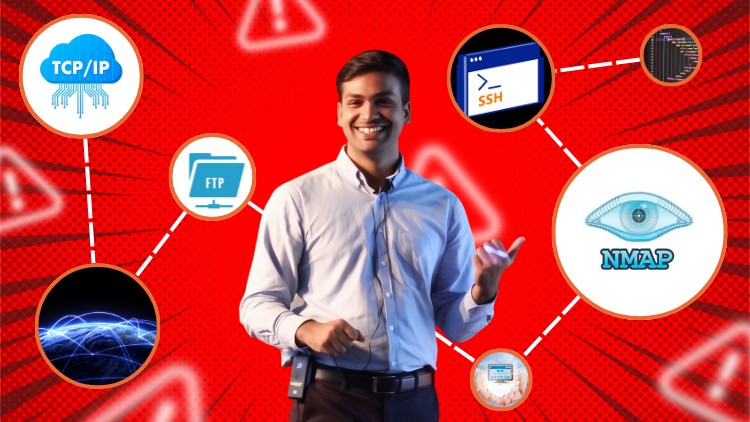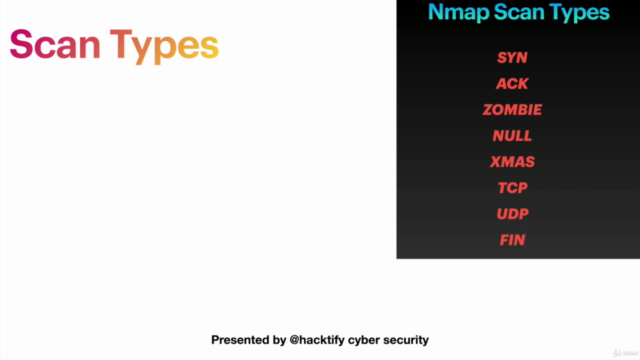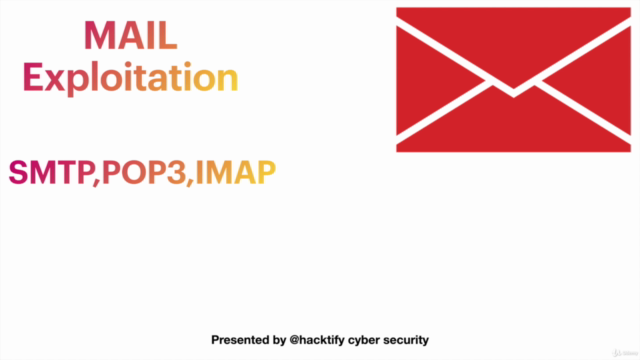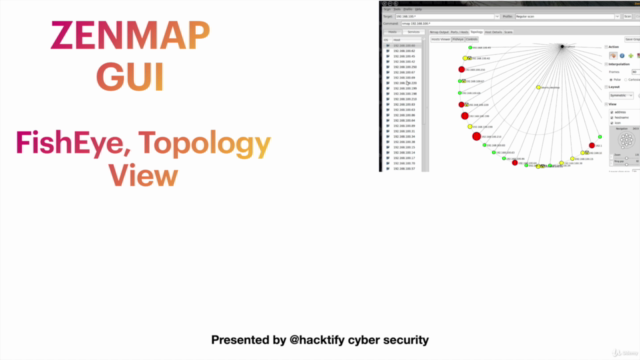Nmap for Ethical Hacking/ Network Security & Bug Bounty 2025

Why take this course?
-
Introduction to Nmap: Understanding the basics of Nmap, its features, and its significance in the realm of network scanning and security assessments.
-
Nmap Installation and Initial Setup: Installing Nmap on various operating systems, setting up the environment for running Nmap commands, and understanding the basic syntax.
-
Nmap Scan Types: Learning about the different types of scans: Host Discovery, Port Scanning, Service Version Detection, Operating System Detection, and Script Scanning.
-
Basic Nmap Scan Commands: Executing fundamental Nmap commands such as
-sPfor host discovery,-sS,-sT, and-sVfor service detection and version identification. -
Advanced Nmap Options: Exploring advanced options like timing templates (insane, aggressive, normal, polite, sneaky, paranoid), output formats (XML, HTML, grepable, script kiddie), and OS detection details.
-
Nmap Scan Output Analysis: Analyzing the output of Nmap scans, understanding the results, and saving them in various formats for different purposes.
-
Nmap Service Detection and Fingerprinting: Deep diving into service detection and OS fingerprinting to gather information about the target systems.
-
Nmap Scripting Engine (NSE): Introduction to Nmap's scripting engine, understanding how to use built-in scripts, and exploring different categories of scripts for various purposes.
-
Running NSE Scripts: Learning how to execute specific NSE scripts for reconnaissance, vulnerability detection, DoS attacks, exploits, and more.
-
Nmap for Reconnaissance: Using Nmap for passive and active reconnaissance to gather as much information about a target as possible before an attack.
-
Nmap with Python Automation: Integrating Nmap with Python scripts for automating scanning tasks, handling large networks, and processing scan results.
-
Vulnerability Scanning with Nmap and VulnScan: Combining Nmap with tools like VulnScan to identify vulnerabilities and automate the process of vulnerability scanning.
-
Nmap in Penetration Testing: Applying Nmap in a structured penetration testing approach, from reconnaissance to exploitation.
-
Nmap for IDS Evasion and Bypass Techniques: Learning various evasion techniques to bypass firewalls, intrusion detection systems (IDS), and intrusion prevention systems (IPS).
-
Zenmap – The Nmap GUI: Setting up and using the Zenmap graphical interface for a user-friendly way to perform network scans and analyze results.
-
Ethics and Legal Considerations: Understanding the ethical implications of network scanning and the importance of obtaining proper authorization before scanning networks or systems that you do not own or have explicit permission to test.
-
Continuous Learning and Community Engagement: Keeping up-to-date with the latest Nmap features, community scripts, and best practices in network security.
Throughout this course, you'll learn how to use Nmap for various purposes, from basic network scanning to advanced penetration testing techniques. It's important to remember that all activities should be conducted ethically and within legal boundaries, with the proper authorization to ensure you are not infringing on anyone's privacy or security.
Course Gallery




Loading charts...